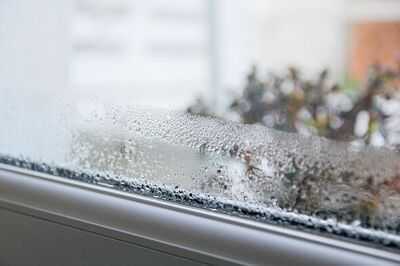

The warm summer sunshine has gradually been replaced by black clouds, wind and rain in recent weeks, signalling the arrival of the autumn season.
The unsettled weather, coupled with the cooler temperatures, means it won't be long before the heating is being switched on and winter coats will be brought back out of retirement. The change in the seasons also means you'll start to notice condensation building up on your windows, particularly in a morning when temperatures are typically cooler. Water droplets form on the glass when warm air inside your home meets the cold surface of the window, which forms condensation as it cools.
This sitting water can then lead to a build-up of mould and mildew around your window, which if left unchecked can be damaging to your health. Luckily there is a very cheap solution that can help keep your windows dry this autumn and prevent condensation from developing.
You don't need a fancy and expensive dehumidifier to absorb moisture from the air in your home as salt can do the job for you. Salt is a common item that most households have sitting in their kitchen cupboard and it has excellent moisture-absorbing properties.
If placed strategically around your home, it can be used to soak up water vapour from the air, keeping your windows free of condensation as a result.
Simply place a bowl full of salt (you can use regular table salt or rock salt) on your windowsills and leave this to absorb the moisture from the air. This will help to keep the air around your window drier and reduce the amount of water droplets that form on the glass.
Experts at Money Wellness explain: "Salt is one of the most absorbent natural products available. Half fill small ramekins with salt and place them near windows.
"You should notice a difference quickly, with condensation levels dropping after just a day. It'll turn black or become wet once it has reached its maximum level of saturation and should then be changed."
Condensation becomes more common as homes heat up and outdoor temperatures drop and if moisture is left to build up, it can lead to damp patches, mould, and possible health risks.
Your heating can play a big part in how much condensation forms in your home as the warmer the air is, the more moisture it will hold. So if you heat one room to a higher temperature and leave other rooms cold, condensation can be worse in the unheated rooms.
To avoid this, the World Health Organisation guidelines suggest a minimum temperature of 21C in a living room and 18C in bedrooms, and it's recommended that heating is left on low all day in cold weather to help control condensation.
If you do get a build up of condensation on your windows, make sure to wipe surfaces down to prevent mould forming and spreading and if you notice any black spots, give your window a clean with a mild bleach solution or anti fungal spray. Placing a bowl of salt on your windowsill to absorb the moisture will help to tackle this problem over the coming months.
Experts at Lottomart add: "Regular condensation build-up isn't just unsightly - it can become a breeding ground for mould, which poses risks to household health.
"The method is really easy to follow. All you need to do is fill a small bowl or jar with table salt and place it on your windowsill. Once the salt clumps together, that's your sign to replace it with a fresh batch to keep it working effectively."
-
Each Zodiac Sign’s One-Card Tarot Horoscope For September 19, 2025

-
Sweden’s health ministers suddenly fell on the stage, know how dangerous take sugar level

-
Inside the Series A mindset at Disrupt 2025

-
Powerful, Lightweight & Travel-Ready Picks

-
AI COLD AFFECT 90% of Jobs but also Boost Market Value By UsD 16 Trillion: Report | Technology news
